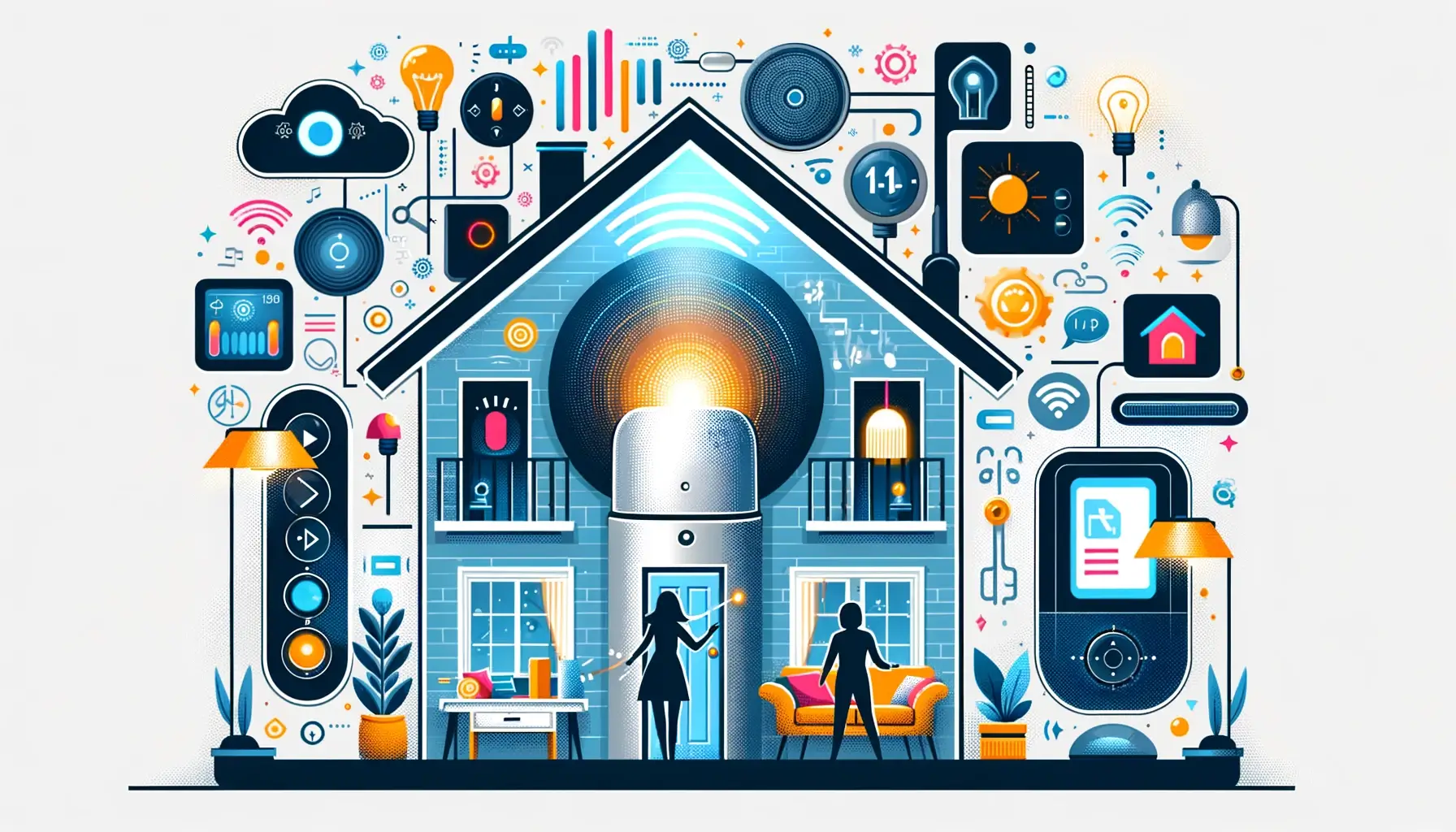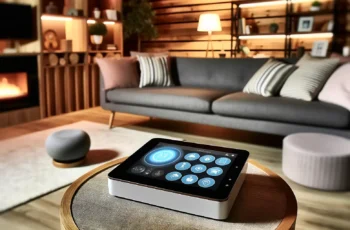In today’s rapidly evolving technological landscape, voice commands, powered by advanced voice recognition technology, are playing a pivotal role in transforming home accessibility. This innovation is particularly significant for individuals with disabilities, offering them an unprecedented level of convenience, safety, and independence within their own homes. This article delves into the transformative impact of voice-activated controls and voice assistants such as Alexa , Google Assistant, and Siri on enhancing home accessibility, focusing on their contribution to safety, independence, and overall quality of life.

Empowering Independent Living for Individuals with Disabilities
Voice-activated devices have become indispensable tools for individuals with disabilities, empowering them with greater independence and safety within their living environments. By enabling users to control various aspects of their homes through simple voice commands, these technologies have effectively mitigated traditional barriers to independence, such as personal safety, household management, and medication adherence.
The Revolution in Digital Accessibility
Digital accessibility remains a critical concern for individuals with physical or cognitive disabilities. Traditional methods of interacting with digital products, such as typing on a keyboard or using a touchscreen, can pose significant challenges. Voice assistants have made substantial progress in breaking down these barriers, offering a hands-free alternative that significantly improves accessibility.
By enabling users to execute tasks, access information, and communicate through voice commands, these technologies have fostered a more inclusive digital landscape, catering to a wider range of abilities and improving usability for all users.
Smart Home Technology: A Catalyst for Enhanced Accessibility
Smart home technology, underpinned by voice-activated controls, is at the forefront of enhancing home accessibility. This technology facilitates the automation of various household tasks and the management of home environments through voice commands, providing individuals with disabilities unprecedented autonomy.
For those looking to explore the best devices that leverage such technology, including smart speakers with advanced voice assistants like Alexa, Google Assistant, and Siri, consider reading The Best Smart Speakers for Your Home in 2024 .
Navigating Safety and Independence
The integration of voice-activated devices into home safety systems has been a game-changer. These systems can now be controlled through voice commands, allowing individuals to easily secure their homes, monitor security cameras, and receive alerts about potential dangers. Furthermore, in emergency situations, voice commands can be used to alert family members or emergency services, providing an additional layer of safety without the need for physical interaction with a device.
Enhancing Everyday Life
Beyond safety and security, voice commands have revolutionized how individuals with disabilities engage with their environment on a daily basis. From adjusting thermostats and controlling lighting to managing entertainment systems and communicating with family and friends, voice-activated technology has made everyday tasks more manageable and enjoyable.
10 Voice-Activated Commands That Can Notably Improve Home Accessibility
- Turn on the lights – This command allows users to illuminate their homes without physically reaching for light switches, enhancing mobility and safety, especially during nighttime.
- Lock/unlock the door – Enhances security and ease of access for individuals with mobility challenges, enabling them to secure their homes without manual effort.
- Adjust the thermostat to [desired temperature] – Offers control over home temperature settings, ensuring comfort without the need to physically interact with the thermostat.
- Open/close the curtains – With smart curtains or blinds, this command can regulate natural light and privacy, contributing to a comfortable living environment.
- Call [contact name] – Facilitates easy communication by making phone calls hands-free, which is particularly useful in emergencies or for those with dexterity issues.
- Remind me to take my medication at [time] – Serves as a verbal medication management system, reminding users to take their prescriptions at specific times, thereby promoting health and wellness.
- Play [type of music or specific song] – Enhances quality of life by playing music for relaxation or entertainment through a simple voice command, without the need for manual operation of audio devices.
- Read my messages – Allows users to stay connected by having their text messages or emails read aloud, making digital communication more accessible.
- What’s my schedule today? – Provides an easy way to access daily schedules or appointments, helping users to stay organized and plan their day effectively.
- Set an alarm for [time] – Helps users manage their time efficiently by setting alarms for waking up, reminders for appointments, or timers for cooking, all through voice commands.
The Future of Voice-Activated Home Accessibility
As we look to the future, the potential of voice-activated home accessibility continues to expand. With ongoing advancements in AI and machine learning, voice assistants are expected to become more intuitive and personalized, facilitating even deeper integration of smart technology into home environments. This progress promises to further enhance the convenience and accessibility of homes, especially for individuals with disabilities, paving the way for a future where every individual can fully enjoy the comfort and safety of their living space.
Conclusion
Voice commands have significantly improved home accessibility, particularly for individuals with disabilities, by offering an efficient, hands-free method to control their environment and access digital services. As voice-activated technology continues to advance, characterized by its increasing sophistication and integration into smart home systems and digital products, its impact on enhancing home accessibility is expected to grow. These technologies hold the promise of creating more inclusive living spaces that cater to the diverse needs of their inhabitants, ultimately leading to a future where accessibility is seamlessly integrated into every aspect of home life.
FAQs:
Voice assistants improve accessibility by allowing hands-free control of devices and systems, enabling users with mobility or dexterity issues to perform tasks and access information effortlessly.
The advantages include enhanced convenience, improved home security, energy efficiency, and greater accessibility for individuals with disabilities, facilitating easier management of home environments.
Voice activated technology helps by providing a means to control devices, access information, and communicate without the need for physical interaction, thus supporting independence and reducing barriers.
Yes, voice control is considered an assistive technology as it aids individuals with disabilities in performing tasks that might otherwise be difficult or impossible, enhancing their ability to live more independently.


